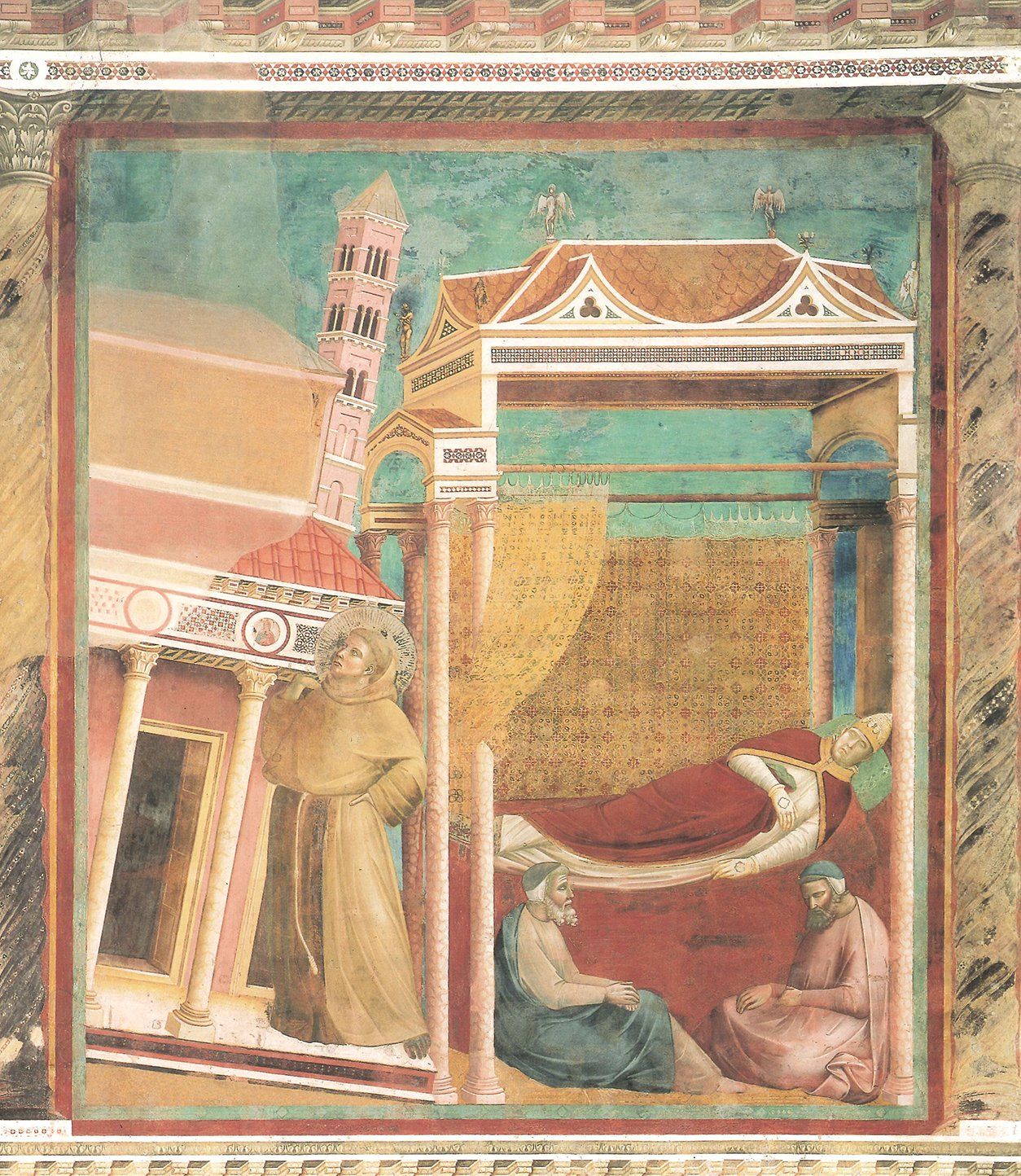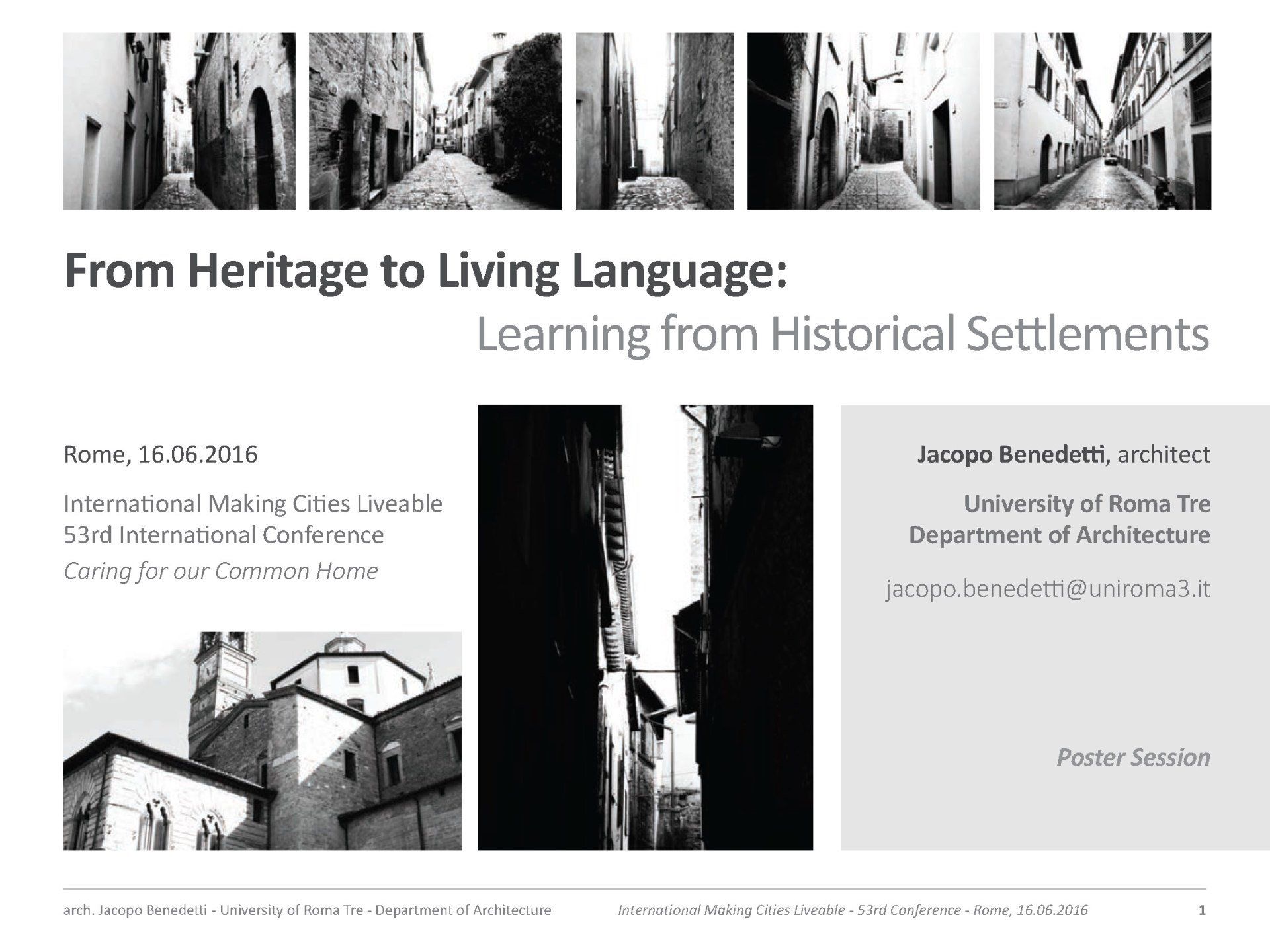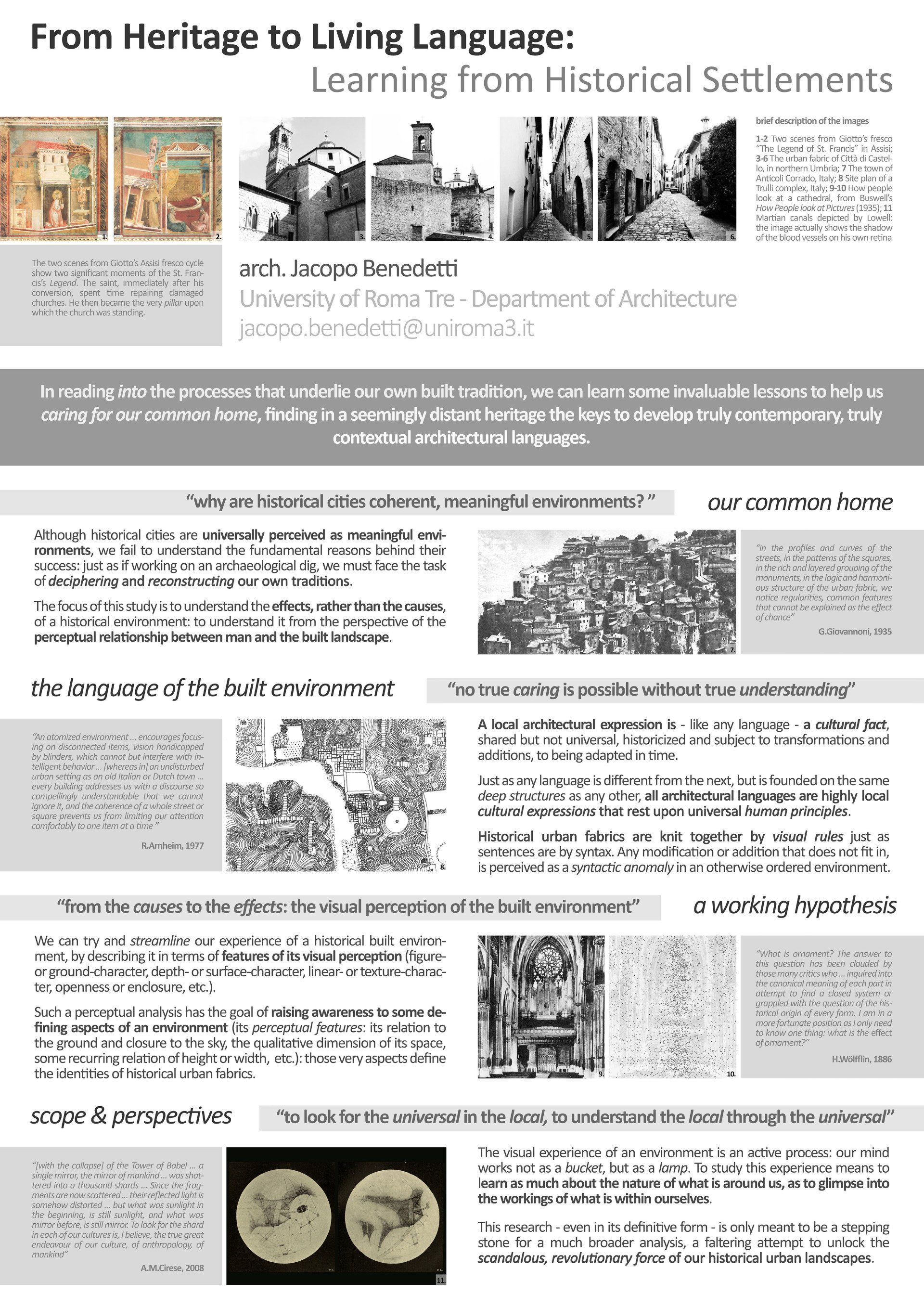FROM HERITAGE
TO LIVING LANGUAGE: LEARNING FROM HISTORICAL SETTLEMENTS. 53rd International Making Cities Liveable Conference, Caring for Our Common Home: Sustainable, Healthy, Just Cities & Settlements. Pontificia Università Urbaniana, Roma. 13-17 giugno 2016.
The staggering coherence of historical settlements rests upon “unwritten – but uncompromising – rules and laws of cohesion and relation within the urban fabric”
This paper is borne of an ongoing research, dedicated to the analysis of historical cities, and especially of the minor
architectures that add up to the vast majority of their urban fabrics, and define the very substance of their environments. The partial findings of this study intend to contribute to the overarching theme of caring for our common home, by arguing that no caring
is possible without understanding, and that in order to understand our built traditions, one is bound to observe them in their full complexity, with “instruments” both within the boundaries of architecture, and well outside of them.
What seems unquestionable, is that for us to understand
our urban heritage, a particular effort is needed in bridging the gap between a contemporary
perspective, and the forgotten practical knowledges
that made it possible for that very heritage to exist. We have to recognize that, although historical cities - their street and alleys, their interlaced houses and monuments, their local relations and their underlying hierarchies - may seem familiar to our eye, there still is a foreignness, a break in continuity, that makes it difficult for us to understand the logic of those settlements, and nearing impossible to replicate it. Just as if working on an archaeological dig, we are faced by the task of deciphering and reconstructing our tradition, at the same time so distant, and so close to our own feeling.
There already is a vast scientific literature on the subject of how to read historical cities, setting out from a great variety of observations, assumptions and theories: from analyses based on building typologies, on their permanence and transformations, to studies of functional types and uses in history, all the way to more practical issues such as the evolution of construction techniques. What most of those experiences seem to have in common, is the goal to inductively reconstruct the causes for a given urban or architectural form, and the processes behind its development. The novel approach that we propose is to analyze the same phenomenon, the urban fabric of a historical city, not in terms of the reasons that have caused its present appearance, but rather of the effects this has on those who experience it. In other words, it will be argued that the question of why a historical city is the way it is, cannot truly be answered without understanding how we look at it. The results of this study might help us acknowledge the value of historical urban landscapes for our well-being, while learning how we can transform them or add to them without damaging their identity. The tacit hope underlying this approach, is that through a deeper understanding of the formal composition of our urban vernacular architectures – i.e. of our cultures -, we might also be able to gain some insight on our elementally human relation to the physical environment around us.
[estratto dal testo degli atti in corso di pubblicazione]



